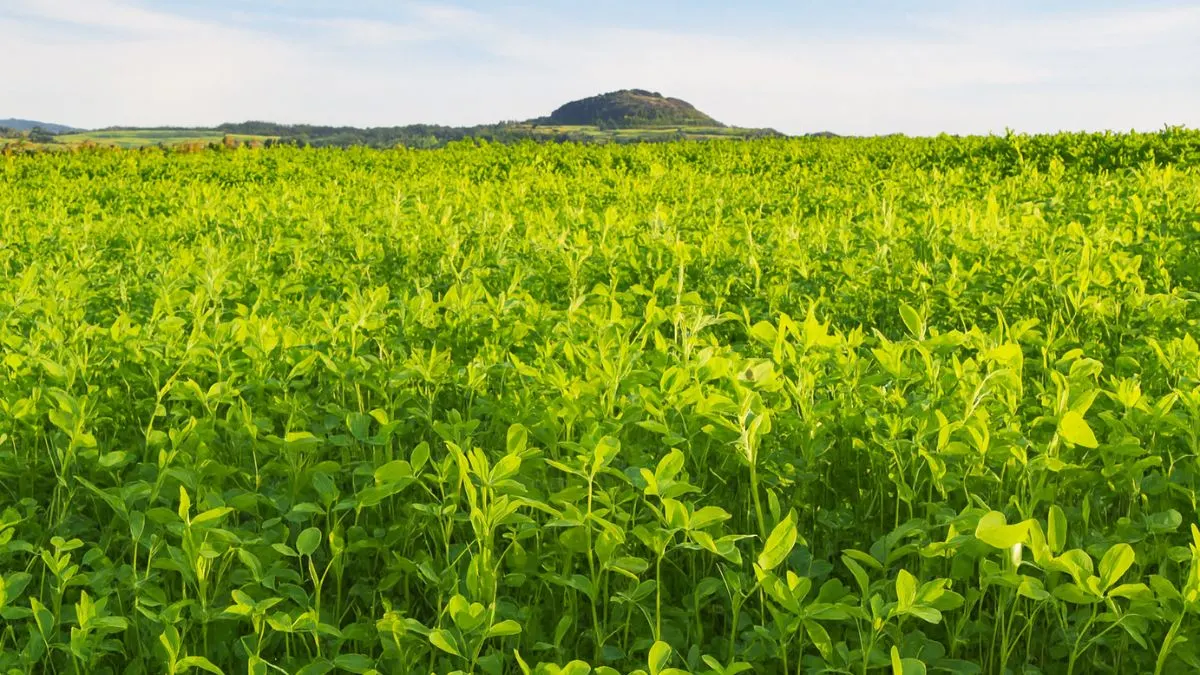In today’s world, where soil degradation and overuse of fertilizers have become common problems, farmers and gardeners are turning back to traditional yet highly effective practices. One such method is green manuring—a natural way to replenish soil health without spending heavily on synthetic fertilizers.
Simply put, green manuring refers to a crop specifically cultivated to be incorporated into the soil while still green. Unlike traditional crops grown for harvest, these plants are intentionally grown to die and decompose, giving back essential nutrients to the soil. This not only supports plant growth but also enhances long-term soil health.
I remember when my uncle, a farmer in India, experimented with sunhemp as a green manure crop. Within a season, the soil became richer and looser, and the next crop of wheat yielded far better. This personal experience taught me how effective this simple method could be.
What is Green Manuring?

At its core, green manuring is a type of crop grown mainly to add nutrients to the soil and improve its health. Farmers grow plants—often from the leguminous family—and then plow them back into the soil before they mature. This process works because green plants contain nitrogen, organic matter, and other essential compounds. When they decompose, they release these nutrients, enriching soil fertility and structure naturally.
Key Benefits of Green Manuring
- Adds organic matter to the soil
- Increases nitrogen availability
- Improves soil texture and water retention
- Suppresses weeds and reduces pests
- Serves as a low cost and effective technology in minimising cost of fertilizers
Also Read: Euphorbia Francoisii: Gorgeous, Rare, and Surprisingly Demanding
Popular Green Manure Crops
Most crops grown specifically for building and maintaining soil fertility and structure belong to the leguminous family, but non-legumes are also used.
Here are some widely grown examples:
Crop Name |
Family |
Key Benefit |
Sunhemp |
Legume |
Nitrogen fixation, rapid biomass growth |
Cowpea |
Legume |
Improves soil fertility and suppresses weeds |
Dhaincha |
Legume |
Adds organic matter, thrives in poor soils |
Mustard |
Non-legume |
Controls pests and diseases |
Clover |
Legume |
Provides excellent ground cover |
By incorporating such crops into your farming or gardening system, you can enrich the soil by adding fresh/dried plant residues, creating a healthy environment for the next planting season.
How Green Manuring Works
The process is straightforward yet powerful:
- Selecting the crop – Choose a crop specifically cultivated to be incorporated into the soil while still green, often legumes.
- Sowing – Farmers sow seeds at the beginning of the rainy season or during fallow periods.
- Growing phase – The crops grow quickly, covering the soil and preventing erosion.
- Incorporation – Before flowering, the crops are plowed into the soil. This ensures maximum nutrient release.
- Decomposition – The plants decompose, enriching soil fertility and enhancing microbial activity.
Why Green Manuring is Important Today
Chemical fertilizers may provide quick results, but they harm soil health in the long run. Green manuring provides a sustainable solution by naturally enriching the soil. It is:
- Eco-friendly
- Affordable for farmers and gardeners
- Suitable for enriching the soil by adding fresh/dried plant residues
- A way to restore balance in overworked soils
For home gardeners in Canada and the USA, small-scale green manuring can also work. For example, planting clover or cowpea in a vegetable patch and turning it into the soil can prepare the ground for the next crop naturally.
Also Read: From Seed to Bloom: How to Grow Vibrant Lupins Flowers
Personal Perspective: My Gardening Experiment
When I first tried green manuring in my backyard garden, I chose clover. Initially, it felt odd growing something only to turn it back into the soil. But the results were remarkable. The soil became softer, healthier, and my tomatoes grew much better the following season.
This personal experience aligns with what farmers have practiced for centuries—enriching soil fertility without the burden of costly fertilizers.
Advantages and Limitations
Advantages
- Enriching the soil by adding fresh/dried plant residues
- Improves soil aeration
- Boosts beneficial microbial activity
- Low cost and effective technology in minimising cost of fertilizers
Limitations
- Requires land to remain uncultivated for food crops during the green manure cycle
- May not suit areas with very short growing seasons
- Needs proper management to avoid weed growth
Also Read: The Right Way to Prune Tomato Plants for Maximum Harvests
Conclusion
Green manuring is more than just an old farming trick—it’s a sustainable, cost-effective solution for modern agriculture and home gardening alike. By growing in the field plants usually belonging to leguminous family, and plowing them back as a crop specifically cultivated to be incorporated into the soil while still green, you can naturally enrich soil fertility and improve structure.
Whether you are a farmer looking to cut down fertilizer costs or a gardener aiming for healthier vegetables, this practice has immense potential.
Start small with clover or mustard in your backyard, and you’ll see the difference in soil health and crop yields.






